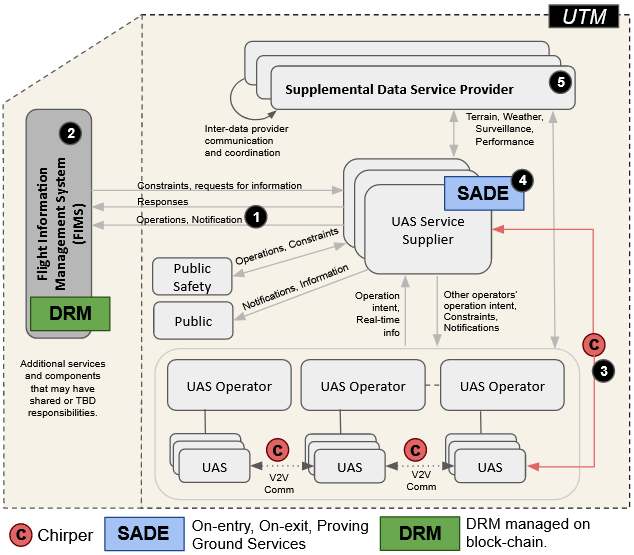While the SADE simulator provides a relatively high-fidelity environment for testing and validating sUAS applications, transitioning all the features and functionalities to real-world SADE zones is not trivial. Resolve challenging real-world problems of deploying SADE in the physical world environment with UTM integration, supported by a specialized onboard integrated circuit for reliable and fast message exchange (Chirps), and enhance the physical environment with an sUAS ‘proving ground’ for onboarding new sUAS.
- TC3.1 Low Power and Reliable Chirper Communication: Communication between sUAS and the SAM is characterized by short bursts of data, such as on-entry requests, on-exit summaries, airspace reservation requests, status updates, and proving-ground maneuvering commands. In early phases of the project we will support communication via a SADE messaging service, which enables access for any internet-connected sUAS without the need for specialized communication hardware; however, this service will provide limited QoS guarantees and is likely to be unreliable in remote places at altitude. We will therefore also develop and deploy a novel chirping mechanism, that utilizes specialized Machine-to-Machine Communication (MMC) protocols which can address SADE’s unique needs while providing a dedicated communication channel with QoS guarantees. Our Chirper will be based on an MMC system tailored for deployment upon sUAS and ground-based IoT devices to support SADE-wide communication. It will use specialized near-orthogonal MMC for extremely low-overhead communication and a custom domain-specific system-on-chip (DSSoC) for low-power, agile, always-on operation.
- TC3.2 Proving Grounds: Deploying sUAS in real-world environments requires robust testing and
validation. As significant discrepancies can occur between simulations and real-world deployments we equip SADE environments with proving grounds, designed to independently validate the sUAS capabilities without the need for any special equipment beyond that required by the general SADE environment. On entering a proving ground, an sUAS will be directed to perform a series of maneuvers and to demonstrate its ability to share status messages, and interactively execute on-entry and on-exit protocols.
- TC3.3 Deploying physical SADE Zones: We address the practicalities and challenges of deploying SADE in the physical world, with a focus on technical aspects of deployment, rather than on regulatory ones. Among other things we will conduct tests in the real-world by instrumenting sUAS systems and establishing SADE Zone infrastructure. We will start by extending the DroneResponse PX4 autopilot platform and the GCS’s microservices with highly modular and portable code for sup-
porting SADE’s on-entry, on-exit, inflight, and proving-ground requirements. We will also develop and deploy Ardupilot compatible modules.
